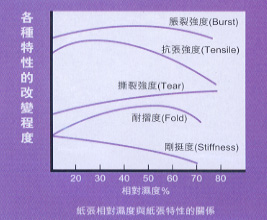With the increasing demand for paper quality and stability among the industry, they often add simple paper testing equipment for themselves, test the paper for internal reference, or compare the data provided by the supplier with each other for collection. Product standard. However, the accuracy of test data often leads to many unnecessary disputes or misunderstandings. In fact, deviations from the data are bound to exist. In addition to normal data fluctuations originating from the test sample itself, sample sampling, pre-test sample handling, type of instrumentation, testing techniques, and methods Affect the test data. The question is only whether the data deviation is within our control. Therefore, the international standards for paper testing, such as TAPPI (Technical Association of the Pulp and Paper Industry) and ISO (International Standards Organization), will all test procedures, including how to sample, process, test methods, instrument requirements, and report forms. Make sure that anyone who tests according to the standard can get comparable test data. For the paper samples before the test procedures, lived and ignored. So take this opportunity to discuss its importance with everyone here.
Since paper is a hygroscopic material, it means that it absorbs moisture and releases moisture as the Relatively Humidity (RH) changes. For example, when we move a paper from a place with low relative humidity to a place with a relatively high relative humidity, because the new environment has a higher Vapour Pressure, the moisture entering the paper from the air will be more Released, so the moisture content of the paper will increase until the relative humidity of the paper rises to the same level as the environment. At this time, we will say that the paper and the environment have reached equilibrium (Equilibrium). On the contrary, when we move paper from a place with a relatively high relative humidity to a place with a low relative humidity, because the new environment has a lower water pressure, the moisture released by the paper into the air will absorb more. The water content of the paper will decrease until the relative humidity of the paper is the same as the environment. From the above example, we can understand that the relative humidity of the environment is closely related to the moisture content of the paper. The paper moisture content also affects various characteristics of the paper, including:
(a) Mechanical properties of the paper, such as Tensile Strength, Stiffness, etc.
(b) Structural properties of the paper, such as paper weight, smoothness, and the like.
(3) Other characteristics of the paper, such as the charging characteristics of the paper, the stability of the dimensions, and the absorptive capacity.

Change of various characteristics Difficulty Burst Strength Tensile Tear Fold Stiffness Relative Humidity Relative humidity Relative to paper properties
Assume that we now measure the moisture content of the same paper in two different environments, 50%RH, 23°C and 10%RH, and 23°C. The moisture content of the former is about 6% of the paper weight, while the latter About 2%. If we stack this paper at 20000 pounds in a 50% RH, 23°C environment and we calculate the weight of the consolidated paper based on the percentage of moisture lost above, we will notice that the paper weight will have an 80 pound deviation. From this example, it is not difficult for the reader to discover that, to obtain accurate paper data, the stability of the moisture content of the paper sample is very important for each test. In other words, we must first test the paper by passing the paper sample through the Preconditioning and Conditioning procedures to stabilize the water content before testing.
In order to make everyone have a unified basis for environmental control when testing, the international testing standards also provide us with the test environment requirements (Table 1). Because the temperature changes, the relative humidity will change. For example, if the temperature of the test environment suddenly changes by 1°C, the relative humidity of the test environment will change by about 3%. Therefore, to control the relative humidity of the environment, we must also control the temperature of the environment at the same time. So from the test standard requirements, we will see that the temperature control is very strict. Furthermore, for a certain type of paper such as synthetic paper or glue-treated paper, the influence of temperature is more important than the effect of humidity.
(to be continued)
Skate Accessories,Truck Skate,Mini Skateboard Truck,Custom Skateboard Trucks
Kids Scooter,Flashing Roller Skate Co., Ltd. , http://www.wideland-sports.com